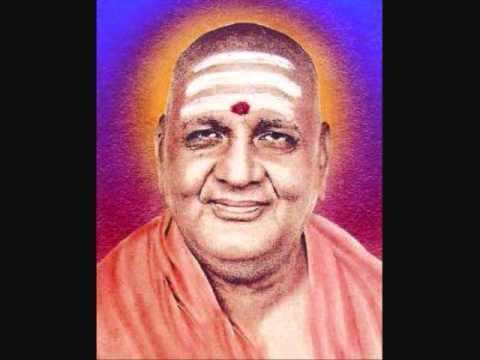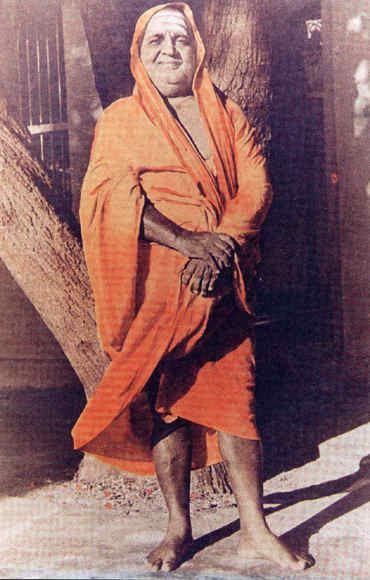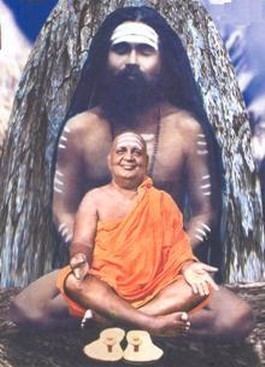Name Gnanananda Giri | Guru Adi Shankara | |
 | ||
Gnananandam
Glimpses-of-Gnanananda.mp4
Gnanananda (Nia-na-nan-da) was an Indian guru, referred to by followers as Swami Sri Gnanananda Giri. He is believed to have been born in the early part of 8th century. He was the Chief Disciple of the Sri Sivaratna Giri Swamigal and one of the leaders (Peetathipathis) of the Jyotir Math, one of the four Maths established by Adi Sankara. This lineage of Peetathipathis is also called the 'Giri' Paramparai, as seen from the Peetathipathis' name which ends with 'Giri'. Gnanananda is a Mahayogi, Siddha Purusha, Himalayan sage and Indian philosopher. He believed in Advaita Vedanta because he was lineage of Peetam. He had a number of disciples including Vidyananda, Triveni and Dasagiri. He gave sanyasa to Haridhos Giriof Adi Shankara. He also made him chief disciple at Gnananda Tapovanam circa 1960s commanding him to spread nama sankirtana through the world. Swami had a number of accomplished disciples through his abnormally long tenure- Bramanamda who took samadhi at Puskar, Achutadasa of Polur. He loved obsurity. He changed identity to avoid being recognised .
Contents
- Gnananandam
- Glimpses of Gnananandamp4
- Birth and childhood
- Sanyasa
- Teaching and establishment of ashrams
- Samadhi
- References

Birth and childhood

Sources report his birth as early 19th century in the village Mangalapuri in North Kanara District of Karnataka. to an orthodox Brahmin couple, Venkoba Ganapati and SriMathi Sakku Bai. He was named Subramanyam at birth, and left his home at a very early age. His birthday is celebrated on the birth star of Kritika in January (the Tamil month of Thai).
Sanyasa

Sivaratna Giri Swami accepted Subramanyam as his disciple and named him Pragnana Brahmachari. Sivaratna Giri initiated Gnanananda in the traditional manner into the Giri order of Jyotir Mutt and gave him the monastic name of Sri Gnanananda Giri. Sivaratna Gnanananda adorned the 6th lineage of Peetam of Jagadguru Totakacharya for some time. However he nominated one Ananda Giri in his place and retired to the height of the Himalayas for penance. Gnananda spent many years at the sacred spot of Gangotri and icy caves of the Himalayas in intense tapas. He travelled extensively on foot, spanning the whole India and Tibet, Nepal, Burma, Sri Lanka and Malaya. He met many holy men over the course of his pilgrimage.
Teaching and establishment of ashrams

Gnanananda returned to India and established an ashram at Attayampatti in Salem and then at Siddhalingamadam near Villupuram. The most famous ashram, named "Sri Gnanananda Tapovanam", is situated two miles away from Tirukkoyilur. Gnanananda built temples for the deities of Gnanaganesa, Gnanaskandan, Gananapurisa, Gnanambika, Mahalaksmi, Gnana Venugopala, Gnana Bhairavar and Gnana AnjaneyanShiva in Tapovanam. Another ashram was constructed in Yercaud, a hill station near Salem. It was called "Pranavanilayam". This was a retreat for contemplatives. Giri wanted to develop it as a centre for comparative religion. In contrast to Tapovanam, no rituals were permitted in Yercaud. The central emphasis was on meditation and dhyana.

Giri taught a number of paths based on the aptitude of his disciples. Therefore, some of disciples are conversant in the "path of knowledge" (jñāna-marga) while others are the "path of works" (karma-marga) and still others follow the "path of faith" (bhakti-marga). His senior monastic disciple Vidyananda Giri was a profound scholar and linguist and brought out Tamil translations of Shankara's commentaries on the Bhagavad Gita and the Upanishads. He also made available Tamil versions of famous Advaitic texts like Sanatsujatiyam. He trained followers in Advaitic Nidhidhyasana. Another of his lineage, Satyananda was associated with Franklin Merrell-Wolff and taught his method of "introceptive knowledge".
Giri realised that the path of Vichara and Nidhidhyasana was confined to a few philosophically advanced aspirants. For devotees at a lesser level, he advocated stuti, japa and nama sankirtan. He was well versed in all the modes of Bhajana Sampradaya and he held that Hari Bhajana for ordinary devotees was the easiest way to attain "Moksha". He had chosen Haridas Giri propagated the importance of Namasankeetanam.
Gnanananda had initiated (given sanyasa) to Hari, the son of Nat Anna Rao. The boy later became known as "Swami Haridhos Giri" on being initiated in sanyasa. Haridhos carried his guru's (Gnianananda's) sandals (Paadhuka) with him to all the holy places he went to. He also visited many holy places with his Guru Paadhuka to propagate the importance of singing god's praises ("NamaSankeerthanam") as instructed by his guru. As part of spreading the cult of Namasankeerthanam, Giri established Mandalis and Samajams in various countries.
Samadhi
Sadguru has indicated to his devotees that he will attain samadhi in a few days. Accordingly, Sadguru Sri Gnananadhagiri Swamigal went into permanent samadhi status on 7 January 1974 around 3:30 a.m. His devotees waited for three days in the hope that Swami will come out of his Samadhi status. After consulting Kanchi Mahaswaamigal and Poondi Mahan who confirmed that Sadguru Swami Gnanananda Giri Swamigal has attained "NIRVIKALPA SAMADHI" his body was put inside a pit on 10 January 1974 around 6:30 pm and the present adhistanam was constructed.
